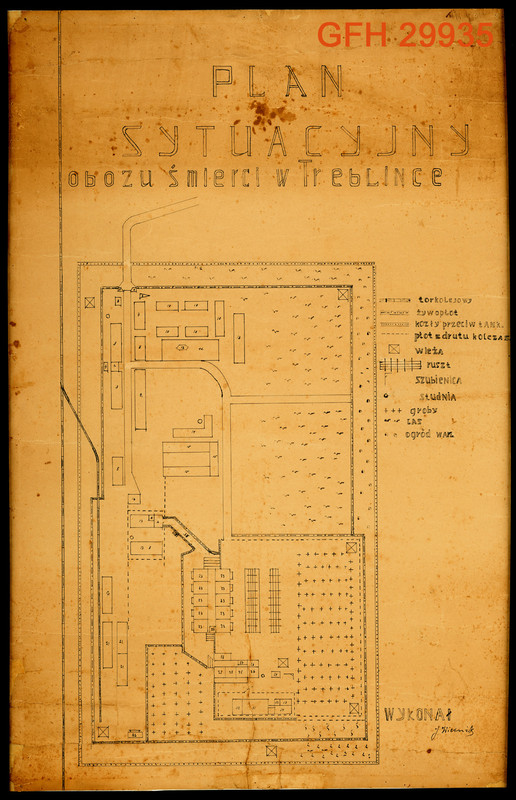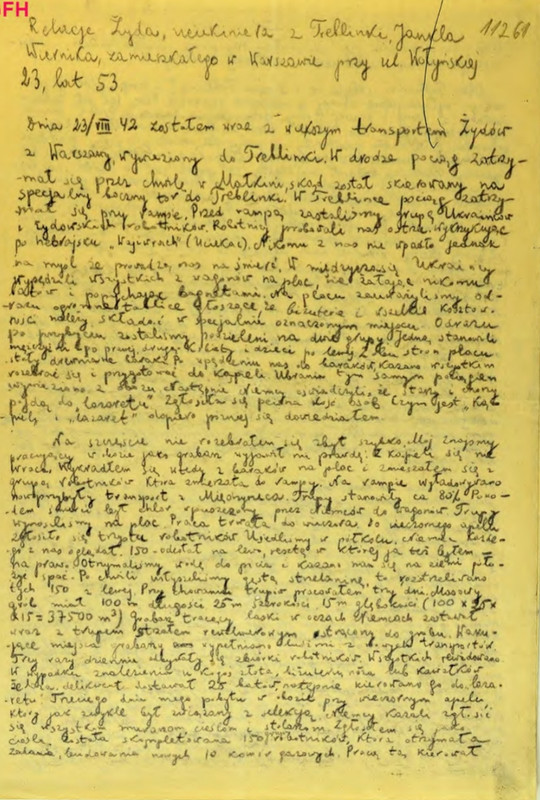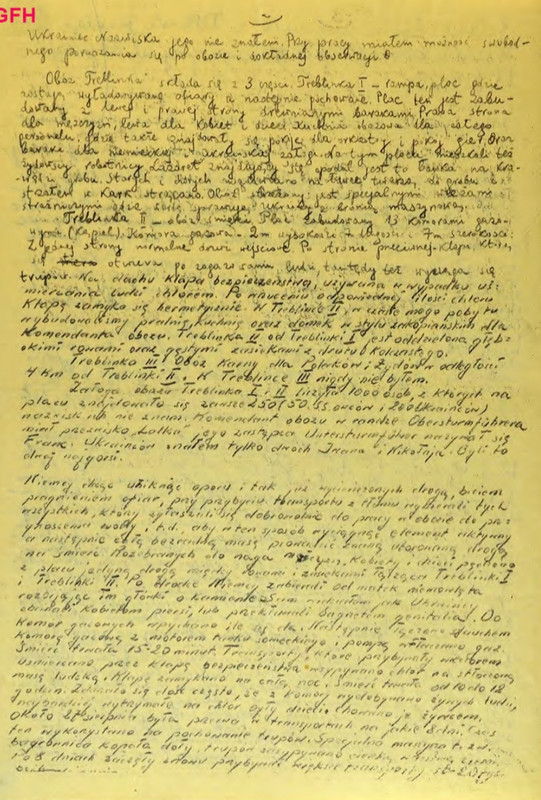Wetzelrad wrote: ↑Tue Sep 16, 2025 8:26 pm
GFH's description of that file also gives us this tidbit:
In 1945, after the liberation, he redid his drawing of the Treblinka camp’s layout, after the loss of the original drawing he had made in late 1943 - early 1944. (This 1945 version is preserved in the Archives of the Ghetto Fighters’ House).
This gives rise to the possibility of two additional Wiernik maps -- one lost and one made in 1945. It also somewhat complicates the timeline, because in Wiernik's testimony (as quoted by Archie) he claimed he made his sketch in 1944, and it was that 1944 sketch on which he based his model, etc. He didn't mention a later sketch. Possibly he committed perjury.
And indeed, GFH has the 1945 map.
http://www.infocenters.co.il/gfh/notebo ... tem=127292

I will comment on it only minimally. The features appear nearly identical to the one published in 1946. The trees in the south, the well, and the gas chamber layout again point to plagiarization of the 1942 map. The north road curving to the right/east is a new idea and factually wrong. Aerial photos show the road continues in a straight line, parallel to the railline.
The 1946 map is no doubt a copy of the 1945 map. Here is what it looks like if you overlay one on the other.
1945 to 1946 animation.gif
Depending on the circumstances, this could indicate Wiernik used tracing or some other copying technique. Such a technique would also be used by a plagiarist. Maybe we should check to see if he traced anything else. (No, I'm not saying he plagiarized himself, don't put words in my mouth.)
I also notice that the symbols used on these two maps match the symbols of the
A Year in Treblinka 1944 map, which is another reason to regard that map as his work.
I may have found the key for this map;

It was in a pdf linked by pilgrimofdark labeled 'Wiernik Estate' under the research sub forum in my post Jienkil Wiernick.
Translation;
Opis planu sytuacyjnego obozu śmierci w Treblince
Description of the Layout of the Death Camp in Treblinka
Camp No. 1
1) Main Gate
Entrance to the camp. Wide, over it two 6-sided pillars with gabled roofs covered in shingles. From the outside of the roof, in the center of the gate, a large floodlight illuminating the outer area of the camp. Under the spotlight, a glass plaque with a large SS emblem. On both sides of the gate, large buildings for guards. The entire gate in the Zakopane style.
2) Guardhouse
Small Zakopane-style building (2 side windows, door in the middle) with a 6-pitched roof covered with shingles. In front, a porch with a hanging roof. The entire house on a foundation. On both sides of the porch, 3 steps.
3) Two Long Barracks
Partially inhabited by Germans. One contains a kitchen and dining room for Germans; the other for Ukrainians. Between the barracks are shower baths (so-called "lit.a") for the Germans.
4) Brick Watchtower
5) Warehouse
6) Cellar, where fats, delicacies, and drinks were stored.
7) Barrack – office and apartment of Hauptsturmführer and his deputies
8) Warehouse – general supplies
9) Two barracks – food storage and bakery
10) Five barracks – quarters for Ukrainians
11) Garden with benches and tables for Germans and Ukrainians.
12) Zoo inside a garden area, fenced with wire mesh. In the center, an oval building covered in birch planks and decorated with various figurines. A dovecote on the roof.
13) Potato cellar with roof and ventilation.
14) Barrack – warehouse of valuables
15) Barrack – workshops. Kitchen and overnight room for prisoners
16) Garage
17) Two barracks:
a) Hairdressing, where women were shaved before suffocation
b) Valuables storage
c) Wardrobe, where victims undressed before going to gas chambers
d) Temporary warehouse for collected food
18) Path used by the victims on their way to the gas chambers, with hands raised
19) Second valuables collection point on the path to the gas chambers, shared with the 2nd camp
20) Ramp, where prisoners were unloaded from transport wagons
21) Warehouse – sorting room for items taken from the murdered
22) Lazaret (field hospital) with a bench where victims sat, faces turned toward a pit. Guard stood behind with a neck shot; victims fell directly into the pit.
Camp No. 2
23) Brick building. Alongside it, a wide corridor. On both sides, 5 gas chambers. In front of each chamber, a ramp.
24) Room with motor used to release gas into the chambers
25) Brick building divided into 3 gas chambers. Attached is a wooden corridor for entering the chambers. A single long ramp leads to the building.
26) Room with another motor for gassing the three chambers. Electrical station powering both Camp 1 and Camp 2.
27) Room where dentists extracted gold teeth from victims after death.
28) Workshops: carpentry, tinsmithing, and shoemaking.
29) Guard towers built from dismantled Jewish homes in Kosów
30) Kitchen for prisoners
31) Barrack – overnight accommodation for prisoners
32) Wooden barrack – laboratory
33) Women's section
34) Laundry and bathhouse for prisoners




